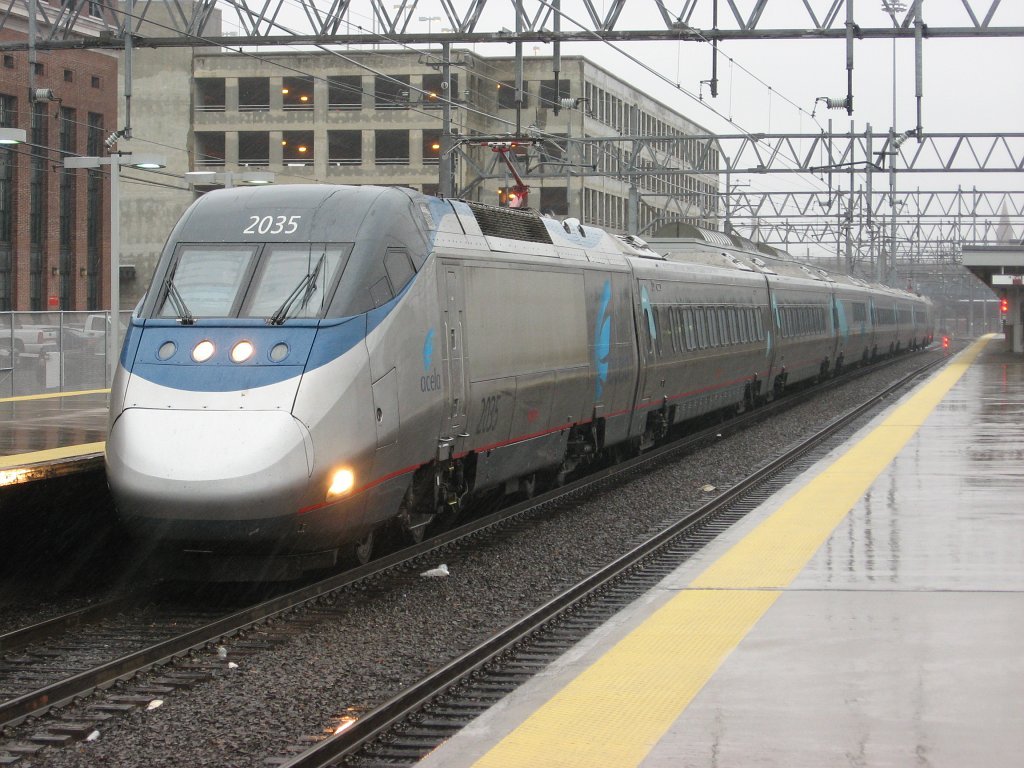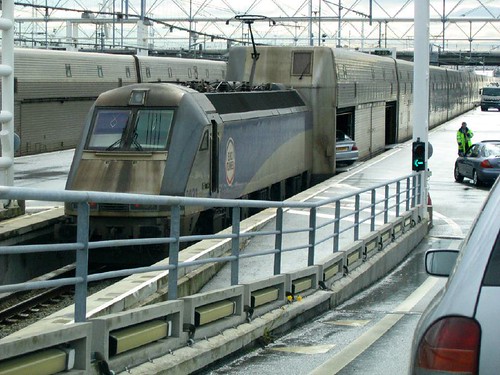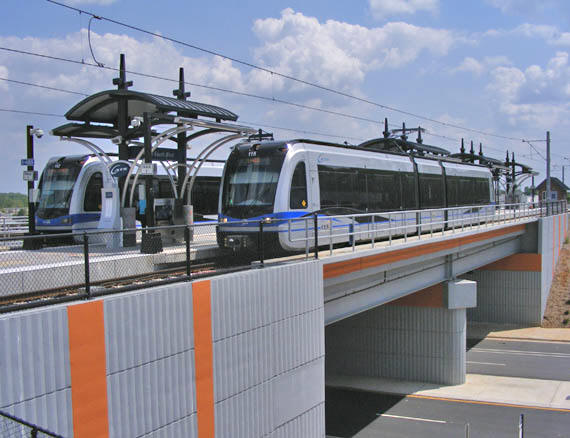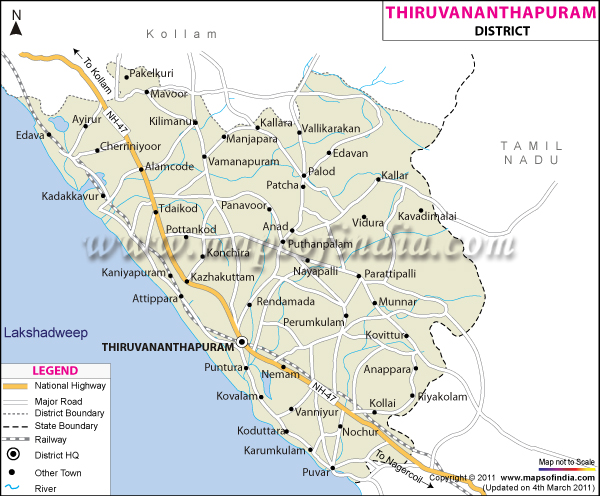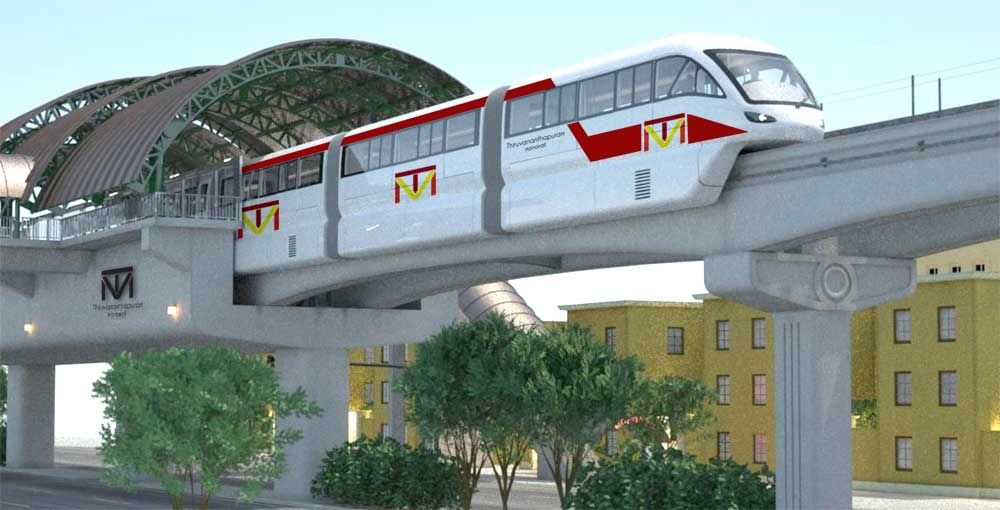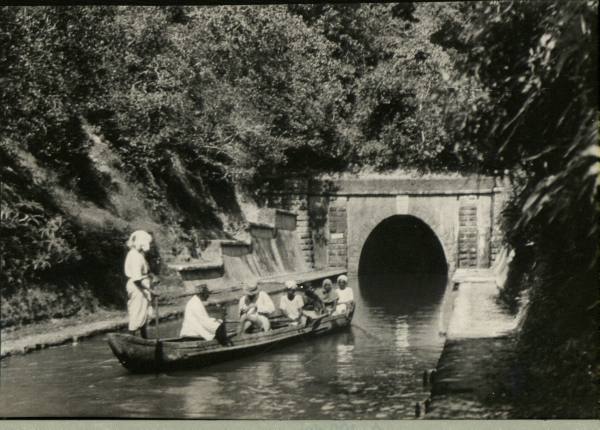Over the last few days, a High Speed Rail system linking Trivandrum to Bangalore and Chennai, as well as to Mangalore, has been proposed. While this seems like a sure-shot way to enter the 21st century in terms of infrastructure on the heels of Japan, France and, most recently, China, do we really need bullet trains at cost of over Rs 160,000 Crores ($ 34 Billion)?!
Act One: The Government of India decides in 2009 to set up High Speed Rail lines along six corridors. However, the only corridor proposed in South India is Bangalore-Chennai-Coimbatore-Ernakulam. Apparently some gent at the Railways forget the State's Capital and biggest city!
Act Two: Last week, a high-level meeting in Trivandrum, chaired by the CM decided to go ahead with the implementation of a High Speed Rail corridor between Trivandrum and Mangalore, via Ernakulam at the trifling cost of Rs 160,000 Crores. Yes, ladies and gentlemen, One-Hundred-and-Sixty-Thousand-Crores, about 13 times Kerala State's annual plan for 2011-12!
Act Three: The Central Government decides to extend the proposed HSR line to Trivandrum (no surprise, they want the line to have some chance of success right?) and amend the pre-feasibility study accordingly. Our enterprising CM immediately claims that he saved Rs 50,000 Croreson his Facebook page! That would be like my claiming that I just saved a few million bucks because I decided not to buy that Gulfstream jet which I could never afford anyways! What a joke!
Jokes apart, the gazillion rupee question is do we need bullet trains? This project will cost almost as the Gross Domestic Product (GDP) of Kerala, that's a rather humbling figure.
What is High Speed Rail?
HSR is typically defined as a passenger rail system capable of operating at speeds exceeding 200 Km/hr, although many systems in Japan, France, Germany and China operate in excess of 300 Km/hr.
HSR's history began with the stream-lined steam trains of the early 20th Century, built up through diesel-electric and gas turbine propelled trains in the middle of the century before truly breaking out through the electric-powered Japanese Shinkansens and French TGVs.Thereafter, HSR has spread throughout Europe, in a limited manner in the US and now to China. It's now perceived as a viable alternative to short and medium-haul air travel and is often a favored public investment for Governments looking to pump in money to boost their economies.
And how is HSR different from ordinary rail systems? The most obvious difference is the rolling stock, those sleek bullet-shaped trains using stream-lined, high-power locomotives and high-tech passenger cars. But the railway lines themselves are high-tech, usually continuously welded and replete with sensors. The track alignment also needs to be devoid of sharp bends and gradients which means that the route usually has to go over, under or through obstacles like roads, rivers, hills and urban areas. All of this means, that HSR is very expensive when compared to conventional rail, perhaps as much as ten times more.
Why HSR?
HSR competes with road and air travel. In the case of the former, HSR has higher capacity, higher speed of travel and is much more environmentally friendly but is suitable only for inter-city travel as opposed to intra-city travel, where mass transit systems such as monorails and MRTS comes into play. Against aircraft, which are much faster, HSR is competitive at distances of up to 600 Km, where the sum of time taken to travel to and at airports and actual flight times, is often greater than time spent on HSR because they tend to run from city center to city center and seldom experience congestion-related delays.
This sounds pretty good in Kerala, where the distance from Trivandrum to Ernakulam is about 220 Km, to Kozhikode is about 400 Km and to Kasargode is 560 Km. Our roads and rail lines transport very high volumes of passenger traffic. A North-South HSR line sounds a no-brainer. Right?
Well, no.
First of all, let's consider the price-point of HSR. A ticket is likely to cost at least 2-3 times more than the fare of an air-conditioned chair car today. In fact, it would be comparable to the air-fare between Trivandrum and Ernakulam, which is upwards of Rs 1000. This means that the demand for this service is likely to be similar to that for air travel between the two cities, which is not exactly breaking down the gates at this point. One might argue that the Japanese and European HSR systems carry billions of passengers a year, but those are nations with 20 times the per-capita GDP of India and where air travel is wide-spread as opposed to the less than 5% of our population that uses that mode of travel. The best comparison is China, where despite massive funding by the Government, the HSR network's high ticket rates are proving to be quite a headache. (A ticket between Shanghai and Beijing costs upwards of $ 90, compared to the per-capita income of $ 4,300)
Next is the gargantuan cost of the system. With a price tag of Rs 160,000 Crores (let's discount our CM's creative accounting, looks like that day at IIM-K has gone to his head!), it looks more like the white whale (Moby Dick, please excuse!) than a white elephant. To put this into perspective, this project will cost 40 times what is needed to build the Vizhinjam project out to all its phases or will place each of us (man, woman and child) under Rs 60,000 of debt!
Of course, Kerala has its own quirks such as the paucity of land and the paranoia about access controlled transportation systems. After all, one of the slogans that de-railed the much-touted predecessor of HSR, the Expressway project, was the fact that it would divide the State into two. Guess what, HSR tracks are strictly fenced off (you don't want an auto straying into the path of train barreling down at 350 Km/hr), so the same (absolutely hare-brained) concerns are likely to be raised again. Plus, a 20 meter (that's what the proponents claim!) wide strip of land, 600 Km long would need to be acquired. Hmmm, about 12 Square Kms = 3000 acres.
Finally, does it all make any financial sense? What would it cost to build and operate. Let's consider a simple scenario of Trivandrum - Ernakulam, which would see the highest traffic and would be built first. The Capital Cost is estimated at around Rs 45,000 Crores, let's take Rs 50,000 Crores. Since the Central Government has not committed to any funding ( and is unlikely to, considering the state of its finances), the money will have to be raised from development finance institutions (read World Bank, ADB, JICA etc) and from the commercial markets. Even if we assume a tame interest rate of 7%, the interest cost alone works out to a whopping Rs 3500 Crores a year. And then HSR systems have high costs of operation and maintenance, with many components including the trains themselves being imported. 5% of the capital cost would be a good figure to start with, and this works out to another Rs 2500 Crores. So, a conservative total of Rs 6000 Crores/year. And this without allotting funds to repay the loans or for maturity of project-based bonds!
How much money will it make? The current proposal talks about trains every 30 minutes in either direction during 7 peak hours (6 - 10 AM and 5 - 8 PM) and every hour during the rest of the day. A total of 31 X 2 = 62 trains a day. The proposal also says that each train will have slightly over 800 seats. That means the total carrying capacity would be around 50,000 passengers a day, and assuming 90% occupancy (!!), the HSR would carry about 45,000 passengers each day. Let's assume everyone pays the end-to-end fare of Rs 1000/trip, leading to a daily revenue of Rs 4.5 Crores and an annual revenue of Rs 1642 Crores.
(Of course, this assumes that there are 45,000 people out there who would be willing to pay a thousand bucks to travel from Trivandrum to Ernakulam and vice versa. To put that into perspective, that is probably an order of magnitude more than the number of travelers between the two cities using air travel or air-conditioned train cars.)
So that leaves HSR slightly under Rs 4400 Croresin the red! Even if we only look at O&M costs (if Sree Padmanabhaswamy contributes the capital!), an annual subsidy of over Rs 1000 Crores is needed to keep the system running.
In case, I made it over complex, the HSR is NOT financially viable. (Not that such minor details have dissuaded proponents of projects like the one Mr Sreedharan (Yes, he is behind HSR as well! Surprise, surprise!) is pushing in the second city of the State.)
Is there a Better Alternative?
I can already imagine many of you, especially those who fervently believe that the current incumbent of Cliff House coined the word "development", would be grumbling that I am being a bitter nay-sayer. In my defense, I am not trying to shoot this down and propose that all of us crawl along congested rail tracks and roads till the end of time, I have a couple of possible alternatives which will not push the State into Chapter 11.
First, let's assume the ideal case that the Government of India agrees to take care of all the funding, at least for the Trivandrum - TN border (to Coimbatore) stretch. The project goes out on a BOT basis and a private developer takes the bid, no doubt with substantial (hopefully, less than 100%) Viability Gap Funding from GoI, possibly as an annuity. In this case, the O&M subsidy could be shared between GoI and GoK. This could be potentially met from the extra tax revenue of economic developed spurred by the new HSR system. Given the state of the Central Government's finances, with the National Highway program running out of steam and the Indian Railways on the verge of bankruptcy, this sounds an unlikely scenario as of now. And then again, even if GoI coughed up the money, that would be eventually out of our pockets.
Second, we could go ahead with building two new tracks from Trivandrum to Ernakulam (and to the Kerala - TN border) on a fresh alignment which suits HSR. However, the tracks will be built to a lower specification, perhaps for speeds of up to 150-200 Km/hr and the trains would be similar to today's Shatabdi. Eventually, as the market becomes more developed, the tracks could be upgraded and high speed trains introduced. This would certainly be cheaper but given the need for major land acquisition, it would still be very expensive and socially disruptive.
Finally, there is the pragmatic option. The current Trivandrum - Ernakulam rail lines are heavily congested, operating at upwards of 110% of rated capacity. With a deep-water container transshipment terminal coming up at Trivandrum and rapid urbanization of the Capital and Ernakulam, both cargo and passenger traffic are likely to surge. Instead of breaking the Treasury on HSR, why not build two more tracks more or less along the same alignment (which avoids heavily built-up areas for the most part)? The new tracks would better in many ways, continuously welded and avoiding the worst bends and gradients. These can make use of existing stations. They would also have only gated railway crossings, either manned or automated.
So two more tracks running maddeningly slow trains? Not exactly. Even tracks not dedicated for HSR service can accommodate some pretty fast trains.The Acela Express is a high-speed train operated by Amtrak between Boston and Washington D.C. on legacy tracks which received only comparatively minor modifications to accommodate the sleek trains which can are capable of hitting 250 Km/Hr.
Image Courtesy: Wikipedia
The Acela was my first HSR experience and these trains are some of the very few across the world which actually make money, having captured almost 40% of the high-speed travel demand in the densely populated North-East corridor which includes Boston, New York, Philadelphia, Baltimore and Washington D.C. The Acela incorporates a nifty feature to run on legacy tracks, it tilts as it negotiates bends! The Acela's average speed is restricted well below its maximum by the inadequacy of old overhead electric supply lines and old tracks, both of which are being upgraded. An Acela-clone, running on modern tracks with a modern overhead supply system could easily average over 200 Km/Hr, covering the distance between Trivandrum and Ernakulam in just about an hour!
There is another major advantage of this solution. Local trains would continue to use the existing track. The new tracks would be used only for the HSR trains, which means that there would be a lot of spare line capacity on the new lines. This could be utilized for high-speed freight services. No, I am not crazy. There are freight trains that run nearly at HSR speeds, the one which most readily comes to mind is the Eurotunnel Shuttle. This routinely runs at 150 Km/Hr.
Image Courtesy:bram_souffreau @ Flickr
In fact, they are already talking about freight trains running at 200 Km/Hr on the proposed Dedicated Freight Corridors. One specific type of freight train comes to mind, container trains running between Vizhinjam and Ernakulam, Mangalore, Coimbatore, Chennai and Bangalore. Operating at speeds in excess of 100 Km/Hr and during off-peak hours, these trains could link India's premier container terminal to important cargo sources/destinations like Bangalore or Coimbatore in 9 hours flat. This kind of service allows the Vizhinjam project to expand its effective hinterland to as far as Bangalore, wherein it becomes much faster and often cheaper to send a container by fast container train to Trivandrum and get it loaded directly onto a 11,000 TEU mainline container ship than send it to Mangalore or Ernakulam and have it loaded on to a smaller ship from which it would be transshipped at Vizhinjam, Colombo or Dubai. High-speed cargo movement can be achieved with existing locomotives and with relatively minor modifications to the rolling-stock. In my view, this ability to move cargo at high speed is the USP of this option.
Yes, the last option is not exactly HSR as you would see in Tokyo, Paris or Shanghai although an Acela clone looks as much of a bullet train as....well...a bullet train! Do we want to spend an immense amount of extra money to travel 300 Km/Hr instead of 200-250 Km/Hr? Is it worth spending Rs 50,000 Crores to travel between Trivandrum and Ernakulam in 45 minutes when we can traverse the same distance in just over an hour, by spending just over 10-15% of that (a new pair of double gauge electrified lines will cost about Rs 20 Crores/Km plus up to Rs 1500 Crores for the high-speed train-sets - a single train-set costs about $ 30-40 Million - Rs 150-200 Crores)?
Personally, the answer is NO! I hope that the Government gets a competent agency that has no motivation to recommend a ludicrously expensive white elephant (a good selection criteria would be to exclude anyone whose name looks like "DM_ _") and gets an independent study done whose aim should be to identify all rail-based options for efficient passenger AND goods traffic, not just to look at options WITHIN the HSR model. This way, all of us may save some real money and time!
